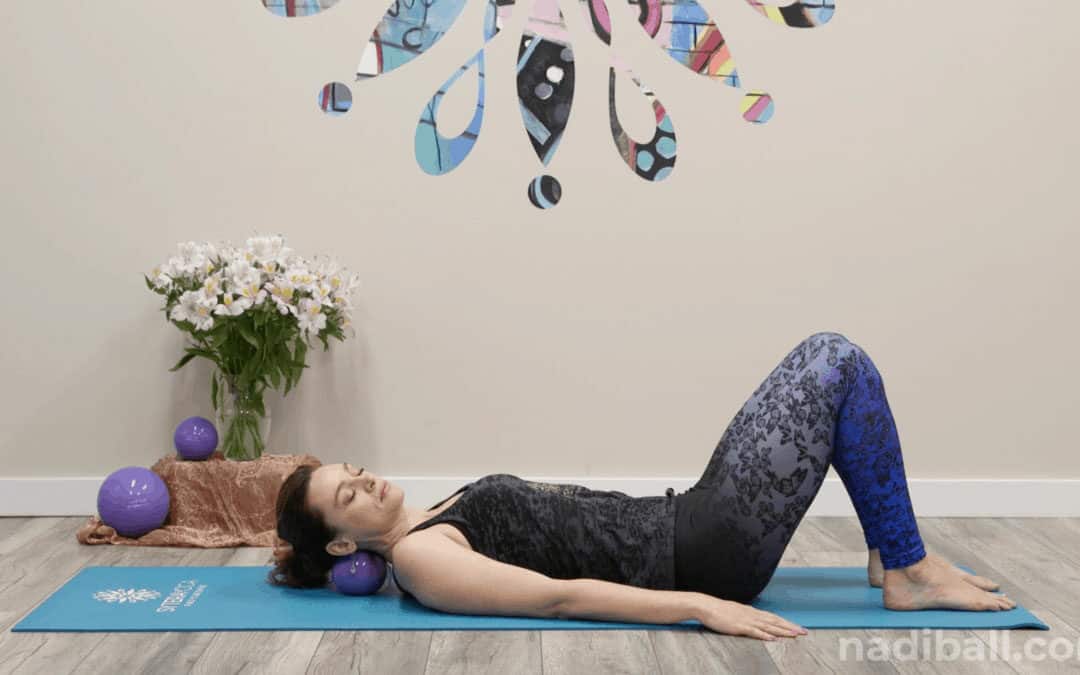
Head & Neck
Use the small Nadi Ball to release tension in the head and neck.

Use the small Nadi Ball to release tension in the head and neck.
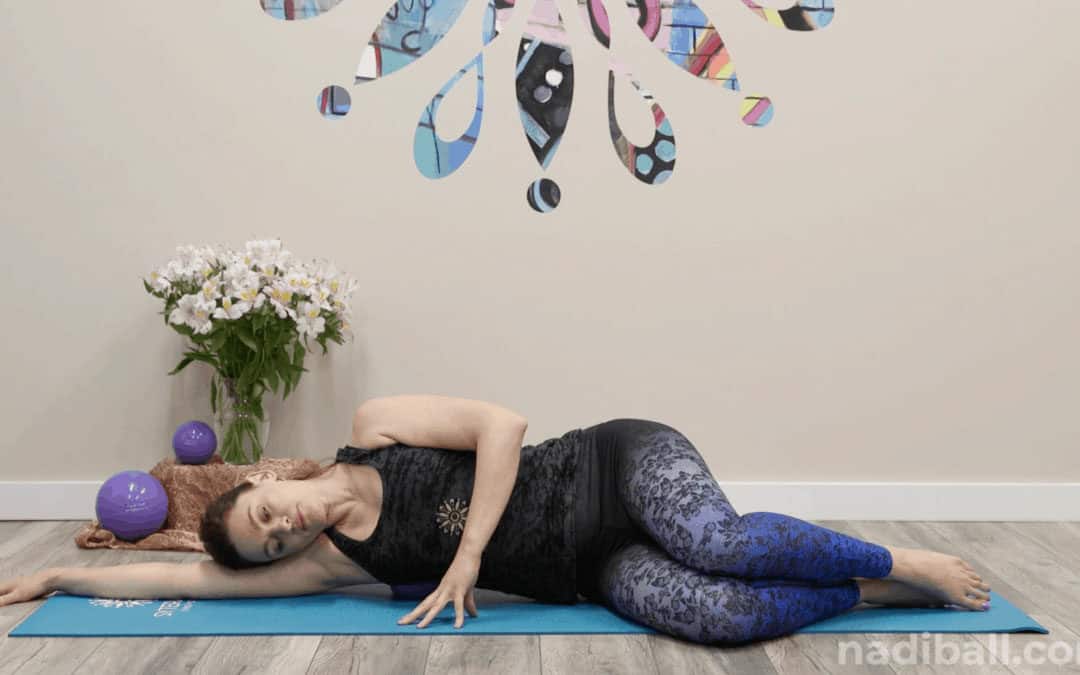
We use the small Nadi Ball to release tension underneath the shoulder blade.
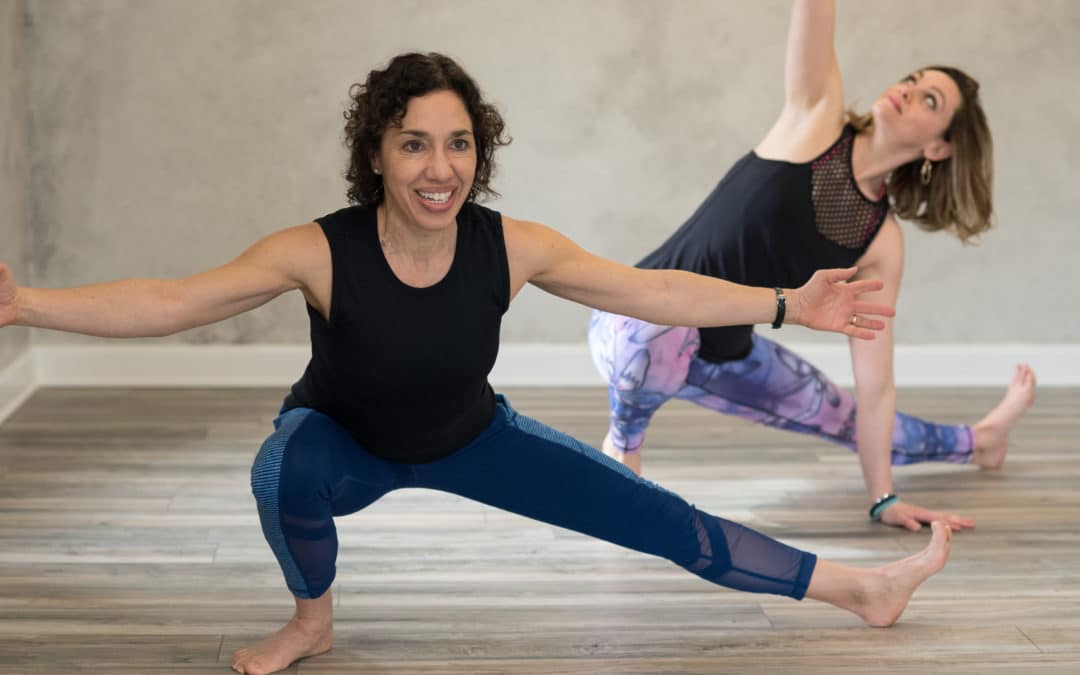
Yvette Carlucci believes in finding out what it’s like to give it your all on the yoga mat. As a child, she watched her mother shy away from physical activity, so Yvette committed to leading a more physical life. In high school she joined the track team, and it cemented her outlook. She would go on to run the Boston marathon and later swap a desk job as a bank branch manager for teaching yoga.
Now a trim and toned mother of two and full-time yoga teacher, Yvette considers physical activity to be fundamental to who she is. Running, which began as a way to manage the stressors of high school, became a passion. Yoga, which she first took up as a way to loosen up tight muscles, became a second career.
Her vinyasa classes, which can be considered down-right vigorous by some, often include arm balances! She encourages students to experiment with the space beyond where they think their edge is. “I’m trying to teach self-empowerment, self-reliance. We are stronger than we know, and we figure that out on the yoga mat so we can use that strength in our lives.”
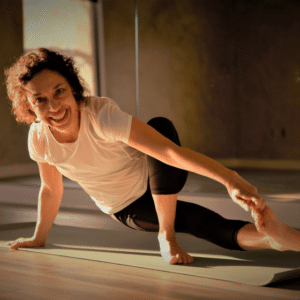
After attending a yoga retreat in Costa Rica in 2000, Yvette, an MBA, felt she had to know more about yoga. “I began to realize that yoga was affecting me mentally, and I wanted to understand more.” She took her 200-hour training followed later by 500-hour advanced teacher training. She has studied with nationally-known yoga teachers Jason Crandell and Max Strom, and credits local instructors, including Sytera, as inspirations. She’s studied Yin, injury prevention, prenatal, and physio stride gait. And she is fascinated by ancient Hindu yoga texts
Beyond the formal training, she’s been blown away by what her students have taught her, she says. By being part of the SyteraYoga community she has built relationships with students who honor her by sharing what they are dealing with off the mat — deaths, illnesses, grief, and more. “It’s totally humbling to me that they can share that much (with me),” she says. “I’m a private person. So, this is such a gift that they are that open and that willing.”
Yvette doesn’t realize it, but she has a gift for making others feel safe to explore, says longtime student Martha Blue. Yvette is uncommonly patient, kind, and thoughtful. “Yvette makes sure no one feels like an outsider,” says Martha, who lost her husband nine years ago and suffered from back pain after a couple of car accidents. She credits Yvette with healing her back.
When students come to class with burdens, Yvette might offer a yoga sequence to encourage stress reduction with poses that are more grounding, to let students find firm footing and know they are safe. Or, in line with her personality, she might suggest that they “rock this practice” and “get out of their heads.” It’s important that students listen to themselves and their “teacher within” way more than they should listen to her, says Yvette. By doing so, her students discover strength and confidence beyond what they believed was possible.
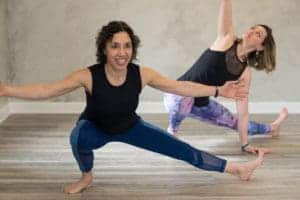
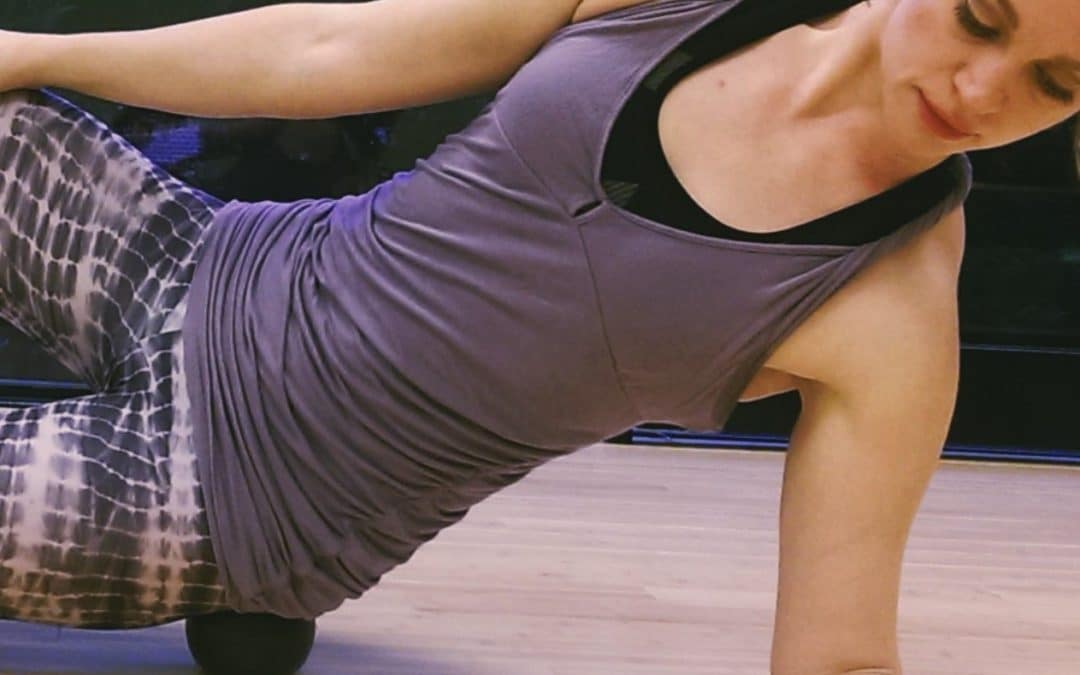
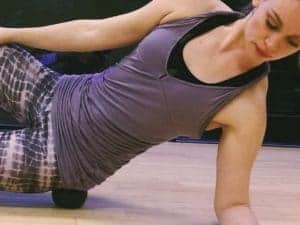 Sytera Field, who started teaching yoga body rolling nine years ago, considers herself a guide. Students have the control over the pressure and intensity of the practice, which is important because there are going to be mental and physical challenges. “You are asking your body to do something different and there is a conflict there,” she says. “There’s a resistance, and you have to decide if you are ready to let go of it. You have to be quiet enough in your mind to decipher the messages that you are getting and whether the sensations are productive or unproductive.”
Sytera studied Thai Yoga Massage in her hometown of Austin. She views body rolling as a form of giving oneself a Thai Yoga Massage. Body rolling is incredibly therapeutic because you get the benefits of stretching and massage at the same time.
Nici Bush, a SyteraYoga student who travels internationally for her job, body rolls regularly. She tosses a set of balls in her suitcase, and after flights she rolls the balls down her back, over her hamstrings, and into the constrictions in her neck and shoulders. After that, it’s easier to get into her yoga practice, and there is a better connection to the floor in standing poses. There are mental benefits, too. She says she gets that same floating feeling that you experience after receiving a professional massage.
At my house, I broke open the package of yoga balls and started rolling. Things started to shift. When I stood up, my legs weren’t tight in the same areas and I felt lighter. My shoulders moved back and there was more room for my belly to rise and fall with my breath.
My husband was going to try next, but then the puppy got to them. Did I mention that the balls are rubbery? We will be ordering a new set. For now, my husband has to wait.
Meghan Mullan is a freelance writer and SyteraYoga student.
Sytera Field, who started teaching yoga body rolling nine years ago, considers herself a guide. Students have the control over the pressure and intensity of the practice, which is important because there are going to be mental and physical challenges. “You are asking your body to do something different and there is a conflict there,” she says. “There’s a resistance, and you have to decide if you are ready to let go of it. You have to be quiet enough in your mind to decipher the messages that you are getting and whether the sensations are productive or unproductive.”
Sytera studied Thai Yoga Massage in her hometown of Austin. She views body rolling as a form of giving oneself a Thai Yoga Massage. Body rolling is incredibly therapeutic because you get the benefits of stretching and massage at the same time.
Nici Bush, a SyteraYoga student who travels internationally for her job, body rolls regularly. She tosses a set of balls in her suitcase, and after flights she rolls the balls down her back, over her hamstrings, and into the constrictions in her neck and shoulders. After that, it’s easier to get into her yoga practice, and there is a better connection to the floor in standing poses. There are mental benefits, too. She says she gets that same floating feeling that you experience after receiving a professional massage.
At my house, I broke open the package of yoga balls and started rolling. Things started to shift. When I stood up, my legs weren’t tight in the same areas and I felt lighter. My shoulders moved back and there was more room for my belly to rise and fall with my breath.
My husband was going to try next, but then the puppy got to them. Did I mention that the balls are rubbery? We will be ordering a new set. For now, my husband has to wait.
Meghan Mullan is a freelance writer and SyteraYoga student.
Everyone has a story to tell, and Zaiba Hasan wants to hear it. Zaiba, a regular and friendly face in the SyteraYoga community, is an open person by nature and can be found volunteering, parenting, and listening to the many people she calls her friends..
Zaiba is the kind of person you call when you need to find enough furniture to set up an apartment for a refugee family of six who are relocating to the area. She is also the mom who is always ready to help her kids’ friends. On the weekend her house is a place where visitors can drop by at any time; she’d never turned anyone away.
It’s important for Zaiba to be completely honest about why she does this—she’s all about building community. She likes to be around people who enjoy helping other people and she likes to be around people in general.
Zaiba is a mother of four children, ages 14, 12, 7 and 5. She heads an event marketing firm and volunteers for local nonprofits including Kindworks, an organization that supports refugees.
Zaiba is Muslim and of Irish and Pakistani descent. As a result, she can relate to people of all backgrounds and takes pride in being able to surround herself with a diverse circle of friends. “How lucky am I?!”
But, it wasn’t always like that. When she moved from Chicago to the D.C. area in 2003 with her husband and an infant, she was trying to mother all by herself and it wasn’t going well.
Since her old community was no longer nearby, she decided to build a new one.
Influenced by her father-in-law, a medical anthropologist, Zaiba says she knew that she had to have a community to be a better mother. America is unique place where women feel the need to do all the mothering without help, she said. “Plop down in any other country in the world and women have extended family and hired help.”
An increasing amount of evidence indicates a link between community and health. Studies show that being in a supportive group generates a positive feedback loop of social, emotional, and physical well-being. Conversely, not having a community can have serious negative health consequences.
Zaiba faced health challenges after the birth of her son in 2013. The baby suffered from a complicated birth and ended up in the intensive care unit for two weeks. He developed gallbladder disease, and breastfeeding didn’t go well. She was exhausted and frustrated that she wasn’t losing any of the baby weight. Then she found out that she had benign tumors growing on her thyroid that were wreaking havoc on her metabolism.
She was suffering from anxiety at this point and realized she needed to reach out.
“I think that most people suffer from anxiety and they don’t really talk about it,” she said. Some of the people around her suggested that she try yoga but she didn’t really want to since she didn’t see it as way to get adequate exercise. She had practiced kickboxing previously.
But, she decided to try a class at a nearby studio taught by Sytera, and was immediately impressed. Yoga, in theory, is an introspective practice, so the fact that there was an outward community at the class speaks volumes to what Sytera is trying to do, she said. She found that people talked to each other after class and seemed to really care about her. In particular, meeting people at SyteraYoga has helped her deal with what teenagers like her kids are going through, which is essential, she said.
It’s incredible what type of people come into SyteraYoga, she said. And when she allows herself to be open and humble, she is amazed at what she learns from other people. And that is the beauty of a community.
Meghan Mullan is a freelance writer and a SyteraYoga student.